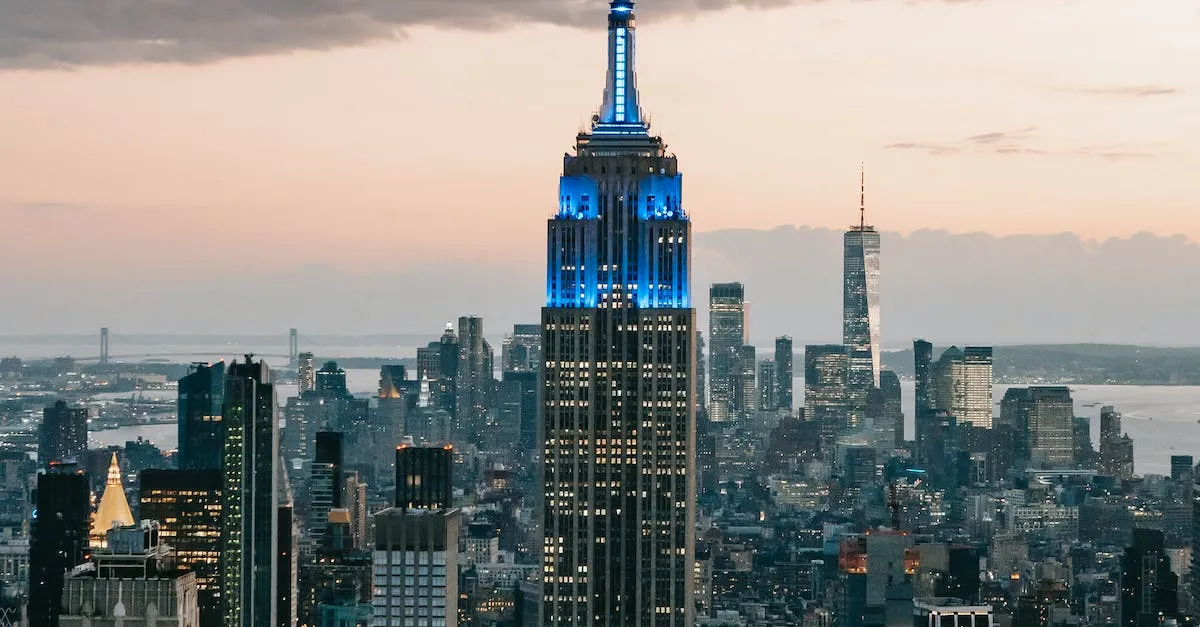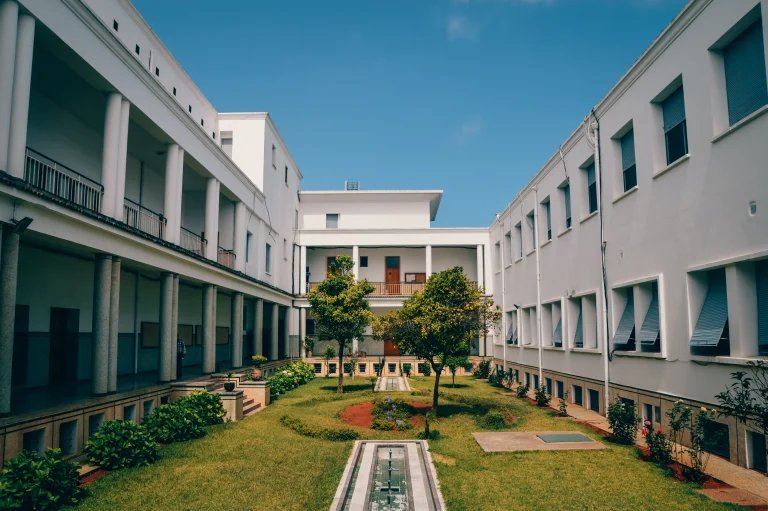Is New York A City Or A State? Clearing Up The Confusion
With a name as iconic as New York, it’s no wonder many get confused whether it refers to New York City or New York State. In this comprehensive guide, we’ll explain exactly what New York is and how the city and state are related.
If you’re short on time, here’s a quick answer: New York is both a city and a state. New York City is the most populous city in the state of New York.
Defining New York City
New York City is one of the most iconic and vibrant cities in the world. However, there is often confusion about whether it is a city or a state. To clear up this confusion, let’s delve into the defining characteristics of New York City.
Location and Geography
New York City is located in the state of New York, which is situated in the northeastern part of the United States. It is positioned on the southeastern corner of the state, where the Hudson River meets the Atlantic Ocean.
The city itself is built on a series of islands, with Manhattan being the most well-known and densely populated. The geographic location of New York City makes it a hub for international trade, finance, and cultural exchange.
Boroughs of NYC
New York City is divided into five boroughs: Manhattan, Brooklyn, Queens, The Bronx, and Staten Island. Each borough has its own unique character and attractions, contributing to the vibrant tapestry of the city.
Manhattan, for example, is famous for its iconic skyline and is home to many world-renowned landmarks such as Times Square and Central Park. Brooklyn, on the other hand, is known for its trendy neighborhoods, diverse culinary scene, and thriving arts community.
Queens is one of the most culturally diverse places in the world, with residents from all corners of the globe. The Bronx is recognized for its rich history and is the birthplace of hip-hop music. Lastly, Staten Island offers a more suburban feel with its parks, beaches, and waterfront views.
Population and Economy
New York City is the most populous city in the United States, with over 8 million residents. Its population density is among the highest in the country, with people from various backgrounds and cultures living and working in close proximity.
The city’s economy is robust and diverse, with sectors such as finance, technology, entertainment, tourism, and fashion playing a significant role. Wall Street, located in the Financial District of Manhattan, is the epicenter of the world’s financial industry, while Silicon Alley in Manhattan and parts of Brooklyn are home to numerous tech startups and established companies.
Defining New York State
Geography and major cities
New York State, often confused with New York City, is actually a separate entity. It is one of the 50 states of the United States of America, located in the northeastern part of the country. Covering an area of approximately 54,555 square miles, New York State is bordered by six other states: Pennsylvania, New Jersey, Connecticut, Massachusetts, Vermont, and Rhode Island.
The state is also bordered by two bodies of water, the Atlantic Ocean to the south and Lake Ontario to the northwest.
New York State is renowned for its diverse geography. It is home to the majestic Adirondack Mountains in the north, the scenic Catskill Mountains in the southeast, and the stunning Finger Lakes region in the west.
The state is also dotted with numerous picturesque towns and cities, including Albany, the capital of New York State, Buffalo, Syracuse, and Rochester.
Population and economy
With a population of over 19 million people, New York State is the fourth most populous state in the United States. The state’s population is incredibly diverse, with residents from various ethnic backgrounds and cultures.
The economy of New York State is highly diversified and robust, contributing significantly to the country’s GDP.
New York State is known for its thriving industries, including finance, technology, entertainment, and tourism. Wall Street, located in the heart of New York City, is the financial hub of the world and serves as the headquarters for many major global corporations.
The state is also home to numerous prestigious universities and research institutions, fostering innovation and technological advancements.
The tourism industry in New York State is a major economic driver, attracting millions of visitors each year. Tourists flock to iconic landmarks such as the Statue of Liberty, Times Square, and Niagara Falls.
Additionally, the state’s vibrant arts and cultural scene, including Broadway shows and world-class museums, contribute to its appeal as a tourist destination.
History and government
New York State has a rich and storied history. It was one of the original thirteen colonies and played a crucial role in the American Revolution. The state was also a significant center for immigration, with millions of people arriving at Ellis Island in search of a better life in America.
As for its government, New York State operates under a democratic system. The state has a governor, currently Andrew Cuomo, who is responsible for overseeing the executive branch. The legislative branch consists of the New York State Senate and Assembly, while the judicial branch is represented by the state’s courts.
For more detailed information about New York State’s history, geography, and government, you can visit the official website of the New York State government at https://www.ny.gov/. This website provides comprehensive and up-to-date information about the state, ensuring that you have accurate and reliable information at your fingertips.
The Relationship Between the City and State
New York City is both a city and a part of the state of New York. It can sometimes be confusing because the city has such a significant influence on the state as a whole. Understanding the relationship between the two can help clear up any confusion.
When NY City became part of NY State
New York City became part of the state of New York in 1788. At that time, it was the first capital of the United States. The state of New York was one of the original 13 colonies, and the city played a crucial role in the early history of the country.
Today, New York City is made up of five boroughs: Manhattan, Brooklyn, Queens, The Bronx, and Staten Island. Each borough has its own unique character and contributes to the diverse tapestry of the city.
How the city influences the state
New York City is not only the most populous city in the state but also the most influential. It is a global center for finance, commerce, culture, and entertainment. The city’s economic power and cultural prominence have a significant impact on the state’s overall economy and reputation.
The city’s influence can be seen in various aspects, such as politics, tourism, and infrastructure. Many state-level policies and decisions are influenced by the needs and demands of the city. Additionally, New York City attracts millions of tourists each year, contributing to the state’s tourism industry.
Shared history and culture
Despite the distinct characteristics of New York City, there is a strong shared history and culture between the city and the state. Both have played significant roles in shaping American history, from the Revolutionary War to the Civil Rights Movement.
Moreover, the arts, food, and even sports connect the city and the state. The city is home to world-renowned cultural institutions, such as the Metropolitan Museum of Art and Broadway theaters, which attract visitors from all over the state and beyond.
Other Notable Cities in New York State
Buffalo
Located in western New York, Buffalo is the second most populous city in the state. Known for its rich history, vibrant culture, and stunning architecture, Buffalo offers a diverse range of attractions for visitors and residents alike.
From the iconic Buffalo City Hall to the renowned Albright-Knox Art Gallery, there is no shortage of things to see and do in this bustling city. Buffalo is also famous for its delicious cuisine, particularly its mouthwatering Buffalo wings, which were invented in the city.
Rochester
Located in the Finger Lakes region, Rochester is the third most populous city in New York State. It is often referred to as the “Flower City” due to its stunning parks and gardens. Rochester is also home to several prestigious universities, including the University of Rochester and Rochester Institute of Technology.
The city has a rich cultural scene, with numerous museums, theaters, and music venues. Rochester is also known for its annual Lilac Festival, which attracts visitors from all over the world.
Yonkers
Situated just north of New York City, Yonkers is the fourth largest city in the state. With its beautiful waterfront, parks, and historic sites, Yonkers offers a peaceful escape from the bustling city life.
The city is home to the Hudson River Museum, which features art, history, and science exhibits. Yonkers is also known for its diverse culinary scene, with a wide range of restaurants offering cuisines from around the world.
Syracuse
Nestled in Central New York, Syracuse is the fifth most populous city in the state. It is home to several renowned universities, including Syracuse University, which is known for its strong academic programs and successful sports teams.
Syracuse is also famous for its snowy winters, earning it the nickname “Snowiest Big City in America.” The city is home to the popular Destiny USA, one of the largest shopping malls in the country, offering a wide range of retail, dining, and entertainment options.
These are just a few examples of the many notable cities in New York State. Each city has its own unique charm and attractions, making New York State a truly diverse and exciting place to explore.
Clarifying the Confusion
Use of ‘New York’
The term “New York” can be used to refer to both a city and a state, which often leads to confusion. However, it is important to understand the context in which the term is being used in order to determine whether it is referring to New York City or the state of New York.
When people mention “New York” without any specific context, they are usually referring to New York City, one of the most iconic cities in the world. With its towering skyscrapers, bustling streets, and diverse culture, New York City is often the first thing that comes to mind when people think of “New York”.
On the other hand, when people mention “New York state” or simply “the state of New York”, they are referring to the entire state, which includes not only New York City but also other regions such as Buffalo, Albany, and Syracuse.
Context clues
One way to determine whether someone is talking about New York City or the state of New York is to pay attention to the context in which the term is used. For example, if someone mentions famous landmarks like the Statue of Liberty or Times Square, they are most likely referring to New York City.
On the other hand, if someone talks about the Adirondack Mountains or the Finger Lakes, they are likely talking about the state of New York.
Additionally, it’s important to consider the surrounding information or the topic being discussed. If the conversation revolves around business, finance, or the stock market, it is more likely that they are referring to New York City, which is known as a global financial hub.
Examples of ambiguity
While context clues can help clear up the confusion, there are still instances where the use of “New York” can be ambiguous. For instance, if someone says, “I’m going to New York this weekend,” it is unclear whether they are referring to New York City or the state of New York.
In such cases, it is best to ask for clarification to avoid any misunderstandings.
Another example of ambiguity is when discussing sports teams. Both the New York Yankees and the New York Knicks use the name “New York,” but they represent different areas. The Yankees are based in the Bronx, which is part of New York City, while the Knicks play in Madison Square Garden, also located in New York City.
Ultimately, while the term “New York” can be confusing due to its dual usage, paying attention to context clues and asking for clarification when needed can help avoid misunderstandings and ensure clear communication.
Conclusion
While it may seem confusing at first glance, New York clearly refers to both a major city and a U.S. state. By examining their distinct geographies, populations, governments and relationship to one another, it becomes clear that New York is both a bustling urban center and a diverse statewide entity.








